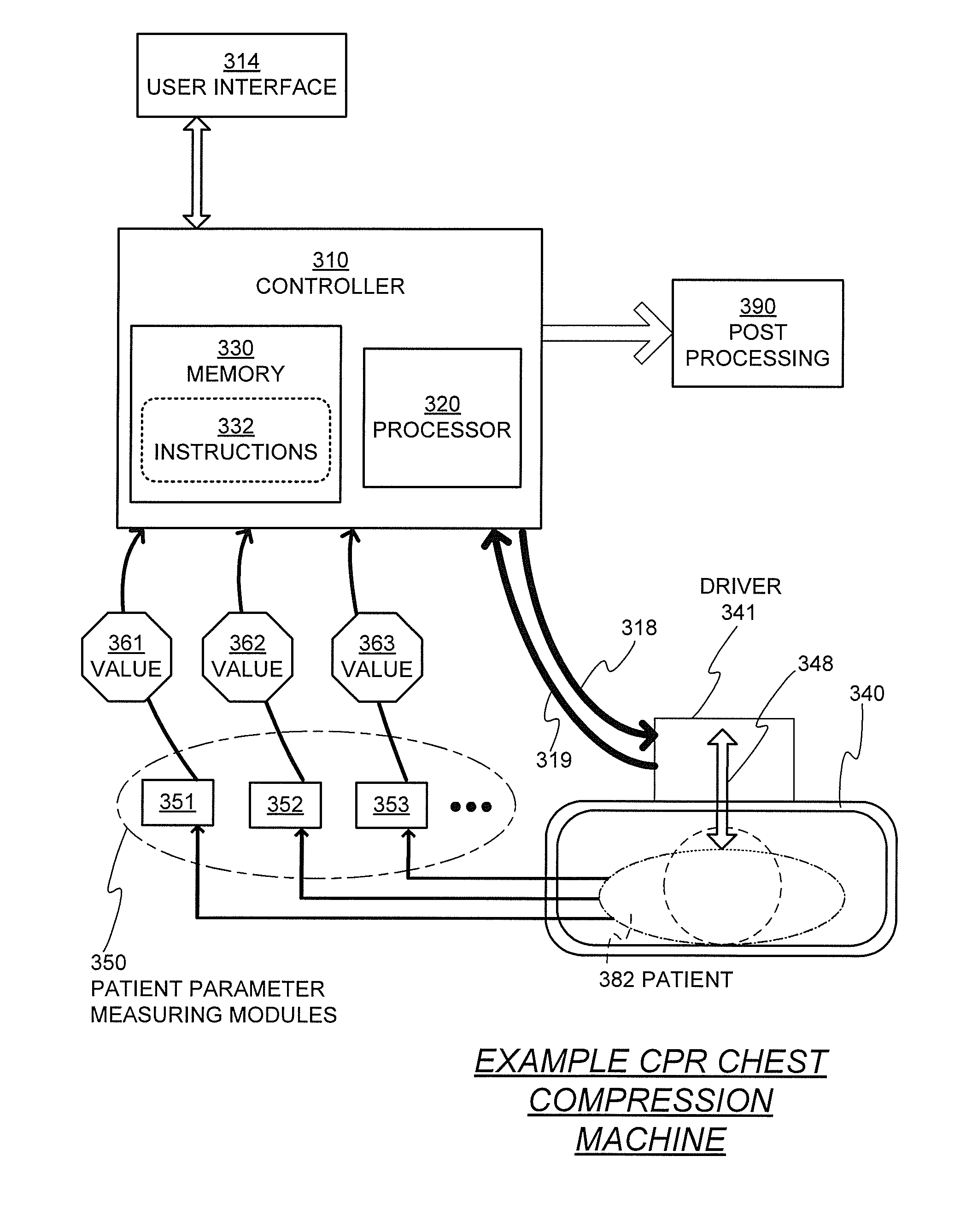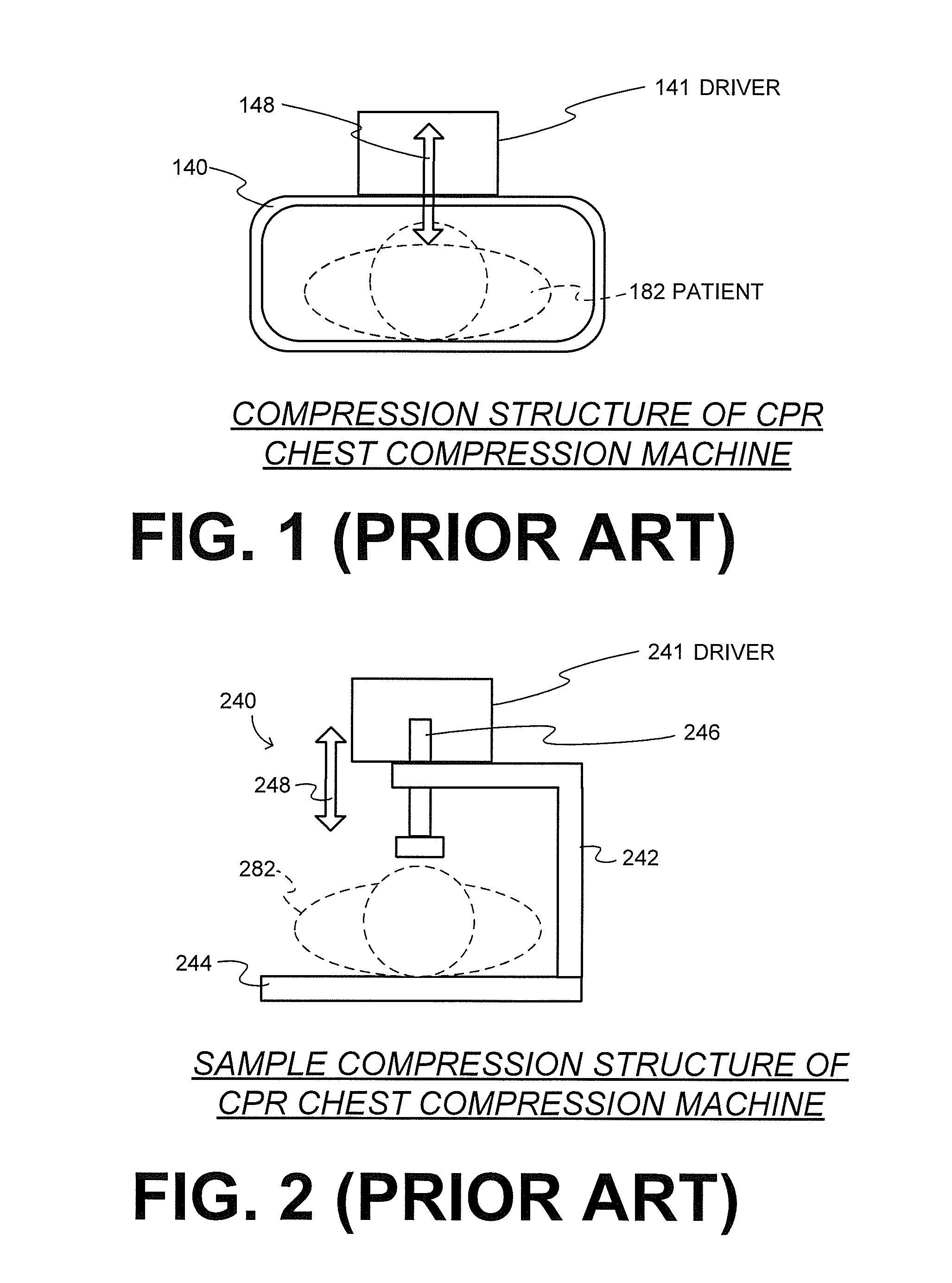Cpr chest compression machine stopping to detect patient recovery
a chest compression machine and chest compression technology, applied in the field of chest compression machines, can solve the problems of deteriorating compression quality, fatigued rescuers, and sometimes ineffective cpr for preventing damage to patients
- Summary
- Abstract
- Description
- Claims
- Application Information
AI Technical Summary
Benefits of technology
Problems solved by technology
Method used
Image
Examples
Embodiment Construction
[0028]As has been mentioned, the present description is about medical devices, systems, and methods for stopping a CPR chest compression machine to detect patient recovery.
[0029]Embodiments are now described in more detail.
[0030]FIG. 1 is a diagram of an abstracted compression structure 140 of a CPR chest compression machine in the prior art. A patient 182 is placed within compression structure 140. A driver 141 is then controlled to drive the compression structure 140 to repeatedly compresses and releases their chest. These compressions and releases are designated by arrow 148, regardless of how effectuated.
[0031]Compression structure 140 is shown as reaching around the chest of patient 182. This alleviates the above-mentioned problem of the patient being on a flexible mattress, which causes ineffective CPR. Indeed, compressions 148 are with respect to compression structure 140, not the mattress. But structure 140 typically does not cover, for example, the head of patient 182.
[0032...
PUM
 Login to View More
Login to View More Abstract
Description
Claims
Application Information
 Login to View More
Login to View More - R&D
- Intellectual Property
- Life Sciences
- Materials
- Tech Scout
- Unparalleled Data Quality
- Higher Quality Content
- 60% Fewer Hallucinations
Browse by: Latest US Patents, China's latest patents, Technical Efficacy Thesaurus, Application Domain, Technology Topic, Popular Technical Reports.
© 2025 PatSnap. All rights reserved.Legal|Privacy policy|Modern Slavery Act Transparency Statement|Sitemap|About US| Contact US: help@patsnap.com



